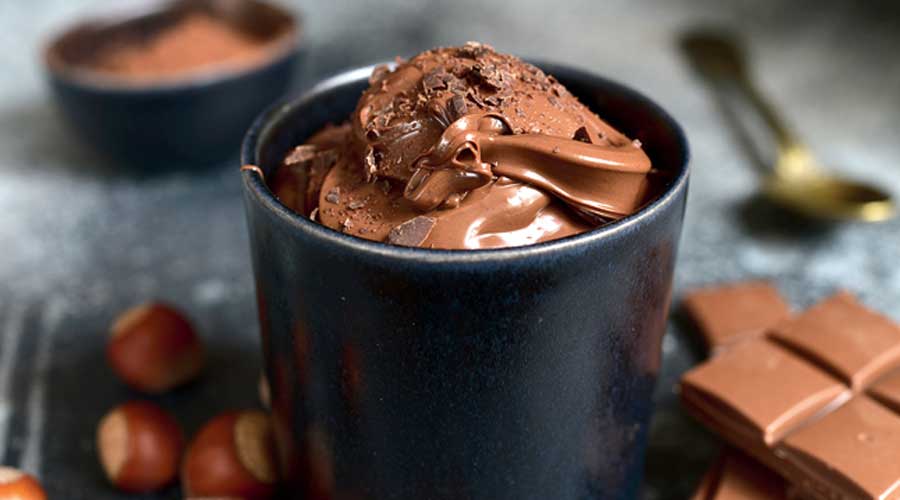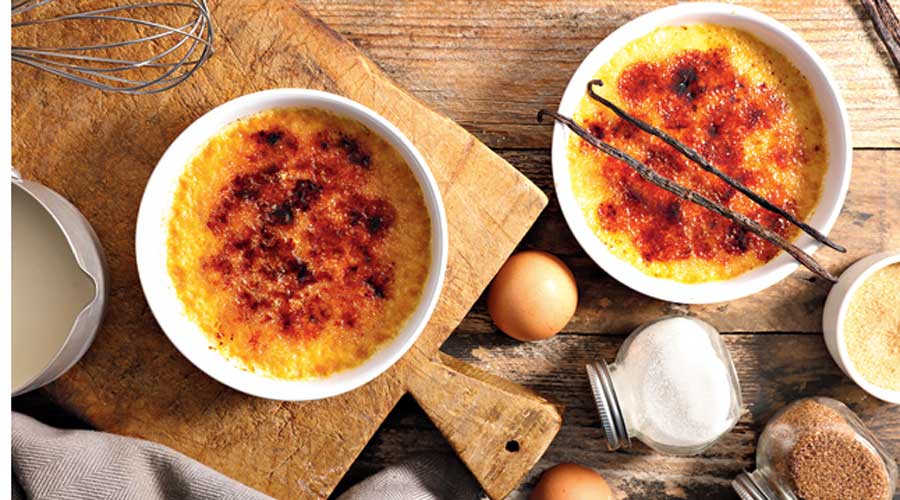Is it a good idea to use a starter dough when baking breads? I have one at home which is three months old. But I don’t exactly know how to use it?
If you backtrack, I wrote a two-piece masterclass on sourdough for t2 just recently. I am sure if you Google you will easily find it but anyway, yes absolutely. Back in my days in London we used to refer to it as ‘feeding the dog’ as once you have a good starter you will need to feed it daily! We would get drunken phone calls late at night from the early shift, sometimes emotionally saying that they had forgotten to “feed the dog” and make sure someone does before they leave!
If your starter is good and I am hoping it is, make a simple dough by sifting together flour (500g) and salt (10g). To this all, add 200g of starter and enough tepid water to make a smooth dough, kneading for around 10 minutes to activate the gluten and place into a lightly-oiled bowl, covered and allowed to prove for around three to four hours until doubled in size. It’s not like making a dough with yeast, so be patient.Knead again for around five minutes until smooth and form into whatever shaped loaf you desire. Allow to prove once more, covered for around two to three hours and bake at 220°C for 30 to 40 minutes or until you have a good crust and it sounds hollow when you tap it.

What are the dos and don’ts of pairing wine with food? Is there anything in particular that I should keep in mind?
I have paired so much food with wine over the years for banquets and sit down dinners and there are a few basics to keep in mind but generally these days, I think it’s so subjective that for most of it, if you like a wine then drink it just as you like it. Room temperature, chilled, iced. It’s up to you. Generally, though as a basic guideline and general rule of thumb….
White and sparkling wines
All these wines when well chilled, are great all-rounders and can cool the burn of a spicy meal but a no- brainer and something everyone has been pairing for years during the summers and works so well. Salads, fish, chicken, vegetables, Kebabs, shorshe maachh etc.
Fruity young red wines (lightly chilled for India):
These are still great with kebabs, most chicken dishes and work really well with a simple roast chicken or pork. They would be great with a biryani, a Bengali fish curry or simple vegetarian dishes like chhole bhatura, jhal farezi and others.
Heavier aged red wines:
Good strong flavourful meat dishes. Rich lamb, mutton or beef stews and curries. Rogan josh, vindaloo, laal maas….
Sweet wines and port wines:
Perfect with desserts and port works so so well with chocolate. I even like a nice dessert wine when eating duck, liver etc. It really cuts through the fattiness and richness.

I stay away from home and don’t consume sugar as much. Can you suggest a tasty low-sugar chocolate dessert that I can make?How to make puddings in the microwave, the ones I have seen you do in cups?
You can make a Spiced Dark Chocolate Fondant by melting butter and brushing the insides of four cups (not metal as we are going to microwave) first and then coating them with castor sugar and cocoa powder. Next, melt dark chocolate (200g) along with butter (100g) and stir in a good pinch each of cinnamon, ginger and nutmeg powder. Once you melt the chocolate, beat in three egg yolks.
You can then whisk three egg whites with a pinch of salt until thick and foamy and lightly fold together with the chocolate mixture. With a ladle, evenly divide the mixture between the moulds and microwave individually for 45 seconds, so part of it is cooked and the rest is sloppy. Serve in the cup with vanilla ice cream in my mind but a dollop of good quality marmalade wouldn’t go amiss.

How can I reduce the stickiness while cooking honey chicken?
The answer is in the question! Remove the honey! Why on earth you would want to do that though is beyond me. It’s there to make it finger lickin’ sticky and divine!
Can you tell me how should I measure or divide eggs for baking?
I am not 100 per cent sure what you are talking about here but if you want to know how to separate yolk from white, then the easiest way is it to break the egg into your hand and let the white run through your fingers, leaving the yolk in your palm.
But if you are suggesting that the recipe is asking for half an egg for instance, then you will need to break an egg into a bowl, give it a beating with a fork and measure out half. And finally, if the recipe it asking for 100ml of eggs, egg whites etc, then just put them into a measuring jug.

At what temperature should one serve a creme brulee? Taken out from the fridge and blowtorched 30 seconds before serving does not win you the points!
Ahhh the great creme brulee debate — should it be warm, should it be chilled… how much sugar for caramelisation and how dark should the caramel be and beyond that, was it the French or the English that invented it? I have put it on menus as ‘Cambridge Burnt Cream’ many times over the years…
So obviously as a chef who has spent many years in classical kitchens and that too a pastry chef for many, making 60 each day when I was at Quaglino’s, I think the best way is served either in a ramekin or as a ‘sur le plat’ dish, starting from chilled, with a good three to four minute of Demerara sugar spooned on top so you have a nice thick caramel crust. A quick spray of water from a spray bottle to stop the top from burning too quickly and then caramelised really well with a blowtorch, under a salamander or grill until you have a nice deep, rich bitter caramel. Exactly as the dish is named — creme brulee, meaning burnt cream.
I so miss those days when the taste of food ruled over presentation and getting the food hot to the guest’s table was mandatory. Is taste taking a back seat today due to emphasis in food garnishing/presentation? And secondly, restaurant vs social media influencer —new age marketing strategy or menace?
I think I can answer both of these together. To start with, yes, I am in 100 per cent in agreement with you. If I speak to most young chefs and ask, what is the most important thing in a dish, invariably, 80 per cent will say garnish, how it looks…. Arrgghhhh, followed by many expletives as I am sure you can understand!
There are many reasons for this, starting with the new age restaurateur that is only interested in how the presentation looks and believes that, that is what will keep bringing in those bums on seats and of course, I don’t really blame the bloggers for posting beautiful photos. It’s their job and how they try to earn a living but there are so many food bloggers and influencers out there that the Internet is filled with… great- looking food that get great written reviews, good or bad most of the time.
If we look at the world of food and successful restaurants, it is fabulously tasting comfort food that always wins the race and with very few bells and whistles. That long-cooked bowl of dal makhni with paratha, a great butter chicken, kebabs hot out of the tandoor, a delicious Thai curry with steaming jasmine rice, a fresh out-of-the-oven pepperoni pizza, a spaghetti aglio olio, a fat juicy burger, the list goes on and on. And if you speak to Swiggy and Zomato, they will tell you that is exactly what sells as a home delivery model and certainly not the frilly stuff.
Some food for thought for many.
Have a question for Shaun? Ask t2@abp.in or shaunchef@yahoo.co.u
